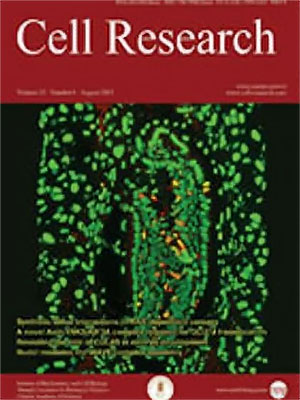
Volume 15, No 4, Apr 2005
ISSN: 1001-0602
EISSN: 1748-7838 2018
impact factor 17.848*
(Clarivate Analytics, 2019)
Volume 15 Issue 4, April 2005: 228-236
REVIEWS
14-3-3 proteins - an update
Paulette Mhawech*
Department of Pathology and Laboratory Medicine at Roswell Park Cancer Institute,Elm and Carlton Streets . Buffalo, New York14263, USA
Correspondence: Paulette Mhawech(pmhawech1@yahoo.com)
14-3-3 is a highly conserved acidic protein family, composed of seven isoforms in mammals. 14-3-3 protein can interact with over 200 target proteins by phosphoserine-dependent and phosphoserine-independent manners. Little is known about the consequences of these interactions, and thus are the subjects of ongoing studies. 14-3-3 controls cell cycle, cell growth, differentiation, survival, apoptosis, migration and spreading. Recent studies have revealed new mechanisms and new functions of 14-3-3, giving us more insights on this fascinating and complex family of proteins. Of all the seven isoforms, 14-3-3δ seems to be directly involved in human cancer. 14-3-3δ itself is subject to regulation by p53 upon DNA damage and by epigenetic deregulation. Gene silencing of 14-3-3δ by CpG methylation has been found in many human cancer types. This suggests that therapy-targeting 14-3-3δ may be beneficial for future cancer treatment.
FULL TEXT | PDF
Browse 2036


